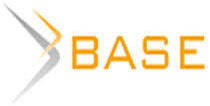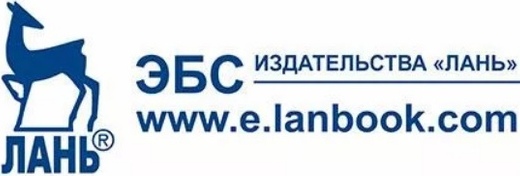Tourist infrastructure as the basis for sustainable development of the destination
Globalization and digitalization of the economy requires the transit of the tourism industry to the principles of sustainable development. The most important element of the sustainable development of tourism is its infrastructural model. The composition of the tourist infrastructure is extensive and is associated with all the elements of the destination that provide and stimulate the development of tourism. Therefore, objects of regional infrastructure can be considered as elements of tourism infrastructure. The concept of sustainable development determines the vector of research in the field of tourism infrastructure. The presented study is aimed at identifying the contribution of social, economic and environmental elements of the tourism infrastructure to the sustainable development of the tourism destination. The study used a quantitative approach based on the IPA method (importance-performance analysis). Interest was measured by comparing the level of expectations and the level of performance. The empirical part of the study consisted in conducting an online survey of tourists and stakeholders of the tourism industry in Moscow, St. Petersburg and Kazan, as the country's leading tourist destinations. The results indicate a high assessment of the tourism infrastructure in general by both groups of respondents. Respondents indicated the high importance and current quality of about 70% of the selected key infrastructure elements. At the same time, inconsistency of opinions of groups of respondents is revealed for certain groups of infrastructure. Infrastructure is a basic factor in ensuring sustainable socio-economic development and competitiveness of tourist destinations.
Platov, A. V., Litvinova, O. I. (2022), “Tourist infrastructure as the basis for sustaina-ble development of the destination”, Research Result. Business and Service Technologies, 8(2), pp.
















While nobody left any comments to this publication.
You can be first.
Albalate, D., Campos, J. and Jimenez, J.L. (2017), “Tourism and high-speed rail in Spain: Does the AVE increase local visitors”, Annals of Tourism Research, 65, pp.71-82.
Amerta, I. M. S., Sara, I. M. and Bagiada, K. (2018), “Sustainable tourism development”, International Research Journal of Management, IT and Social Sciences, 5(2), pp.248-254.
Bell, S., Tyrväinen, L., Sievänen, T., Pröbstl, U. and Simpson, M. (2007), “Outdoor Recreation and Nature Tourism: A European Perspective”, Living Review in Landscape Research, 2, pp.1- 46.
Deenihan, G. and Caulfield, B. (2015), “Do tourists value different levels of cycling infrastructure?”, Tourism Management, 46, 91-101
Dwyer, L., Forsyth, P. and Dwyer, W. (2010), Tourism Economics and Policy, Bristol, Buffalo, Toronto, Channel view publications.
Eskildsen J.K. and Kristensen К. (2006), “Enhancing importance-performance analysis”, International journal of productivity and performance management, 1, pp. 40-60.
Hansen, N.M. (1965), “Unbalanced Growth and Regional Development”, Western Economic Journal, 4, pp.3-14.
Khadaroo, J. and Seetanah, B. (2007), “Transport infrastructure and tourism development”, Annals of tourism research, 34(4), pp.1021-1032.
Lewinson, D. M. (2001), “Financing infrastructure over time”, Journal of Urban Planning and Development, 127(4), pp.146-157.
Lohmann, G. and Netto, A.P. (2017), Tourism theory concepts, models and systems, CABI, Oxfordshire.
Mandić, A., Mrnjavac, Ž. and Kordić L. (2018), “Tourism infrastructure, recreational facilities and tourism development”, Tourism and Hospitality Management, 24(1), pp.1-22.
Mera, K. (1973), “Regional production functions and social overhead capital: An analysis of the Japanese case”, Regional and Urban Economics, 3, pp.157-186.
Murphy, P., Pritchard, M.P. and Smith, B. (2000), “The destination product and its impact on traveller perceptions, Tourism Management, 21(1), pp. 43-52.
Olafsdottir, R. and Runnstrom, M.C. (2013), “Assessing hiking trails condition in two popular tourist destinations in the Icelandic highlands”, Journal of Outdoor Recreation and Tourism, 3-4, pp.57-57.
Platov, A.V. and Tarchokov, S. K. (2021), “Infrastructure development of the tourism industry in the context of globalization“, Proceedings of the 10th All-Russian Scientific and Practical Conference «Promising areas in the field of physical culture, sports and tourism», Nizhnevartovsk, Russia, pp. 233-240.
Rehman Khan, S.A., Qianli, D., SongBo, W., Zaman, K. and Zhang, Y. (2017), “Travel and tourism competitiveness index: The impact of air transportation, railways transportation, travel and transport services on international inbound and outbound tourism”, Journal of Air Transport Management, 58, pp.125-134.
Sakai, M. (2006), “Public sector investment in tourism infrastructure”, In: Dwyer, L., Forsyth. (eds.), International Handbook on the Economics of Tourism, Cheltenham, UK, Northampton, USA, Edward Elgar, pp.266-279.
Slashchuk, A. and Bernadska, H. (2019), “Scientific approaches to conceptualization and classification of tourist infrastructure”, Ekonomichna ta Sotsialna Geografiya, 81, pp.12-17.
Swarbrooke, J. and Horner, S. (2001), Business travel and tourism, Butterworth-Heinemann, Jordan Hill, Oxford.
Thapa, B. (2012), “Soft-infrastructure in tourism development in developing countries”, Annals of Tourism Research, 39 (3), pp.1705-1710.